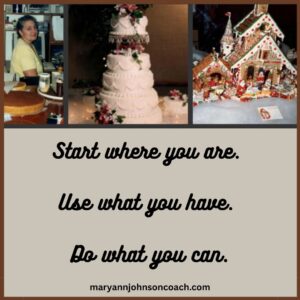 A few Sundays ago, my husband tuned in to a show my mom likes to watch, Music and the Spoken Word. The episode he pulled up for her was from Jan. 12, 2025.
A few Sundays ago, my husband tuned in to a show my mom likes to watch, Music and the Spoken Word. The episode he pulled up for her was from Jan. 12, 2025.
It was an interesting and thought-provoking 30 minutes, and Don and I had a conversation about it. We had experienced what was shared. Our experiences weren’t as dramatic as the one shared in the program, but they were powerful for us, nonetheless.
Lloyd D. Newell, who was the moderator at the time, began by saying, “Every great thing has a beginning. A business begins with an idea. A piece of art develops from a moment of inspiration. A skill set or talent blossoms from a desire to try something new. Anything great or grand first comes from something small and simple.” I knew what he said was true. I’ve heard this in many seminars and classes and have read it in books. Even more than this, I have lived it.
However, I have also experienced that beginning, taking that first step, can be intimidating. The program and my conversation with Don got me thinking about what I have learned and experienced, both successfully and at times, less successfully. Beginning is a practice. Like riding a bike, you must begin, and then keep going, even if you fall a few times.
Start where you are. Use what you have. Do what you can.
Arthur Ashe, the first African American winner of the Men’s US Open Championship, shared his thoughts on how to take that first step, how to begin. He said, “Start where you are. Use what you have. Do what you can.”
It doesn’t seem like that would be enough, but it is. That has been my experience. I have written about the importance and magnificence of small and simple things, done consistently, and the amazing results that come.
Newell shared the story of Sarah Gilbert, whose life exemplified what Arthur Ash shared and what I have lived. Her first step towards a grand goal seemed impossible. In 1851, Sarah wanted to immigrate to America with her family. Her family was large, and their funds were small. There was no way for them to accomplish such a high goal, or so it appeared. Sarah thought about her options, came up with an idea, and then began right where she was, with what she had. She did what she could.
She bought a blind horse and an old wagon. Her husband repaired the wagon and added eight seats to the wagon bed. Each week, Sarah would take paying customers to town to do their shopping. While in town, Sarah would buy simple things she could resell in her small village. Each week, she saved a few pennies. I’m sure when she looked at the jar of savings, it was discouraging, at times. I mean, a few pennies a week. How could this ever get her family to America?
Sarah did eventually get her family to America! It took 27 years. She stuck with her simple system week after week, no matter how discouraging it felt, and, in the end, by small and simple steps, done consistently, she accomplished the impossible. She started where she was. She used what she had, and she did what she could. The result was amazing.
The ideas and dreams we each have require action. We must begin somewhere, even if we aren’t sure how we can make it happen. We must take the first step, where we are, with what we have, and then keep taking steps.
Becoming a successful speaker, teacher, and coach for over a decade began with one small step
When I was five, I decided I wanted to be a speaker. When I was eight, I knew I would write and publish a book. Then I married and raised seven children in Montana. I couldn’t see how any of this could come to pass for me. When I was in my early fifties, we moved to Utah, and I was asked to speak at a homeschool meeting. I didn’t feel competent at that time, even though I had homeschooled my last two children. But I took that step, and ten years later, I was speaking and teaching all over the United States, and I had a published book. All because I was willing to step out and take that first small, scary step.
You Must Start Somewhere
Newell ended the program by sharing this thought – “A simple idea inspires action and action is repeated and improved upon over time, eventually turning into something grand. No great thing can ever be accomplished if you don’t start somewhere.”
This success formula led me to become a speaker and published author. However, even before then, I was using this formula. I wasn’t even aware I was utilizing a success principle. : ) To help raise our seven children in Montana with small means, I taught myself to decorate cakes. I reached out to a woman who was a professional, and she graciously helped me. Then, for over 21 years, I created amazing cakes so my children could have shoes, a new sweater, go on a camping trip, and for one daughter, a trip to Europe in high school. She and I made cakes together and sold them in our neighborhood and church to help fund her trip.
Like Sarah, if you looked at our means, you would have thought it was impossible to do what we did. But we lived the formula, even when we didn’t know we were doing anything important. I began where I was. I had taken a cake class in high school, and that gave me the courage to try. : ) I used what I had, a friend whom I bravely asked for help. I did what I could. I kept learning, practicing, and selling cakes to help care for our family.
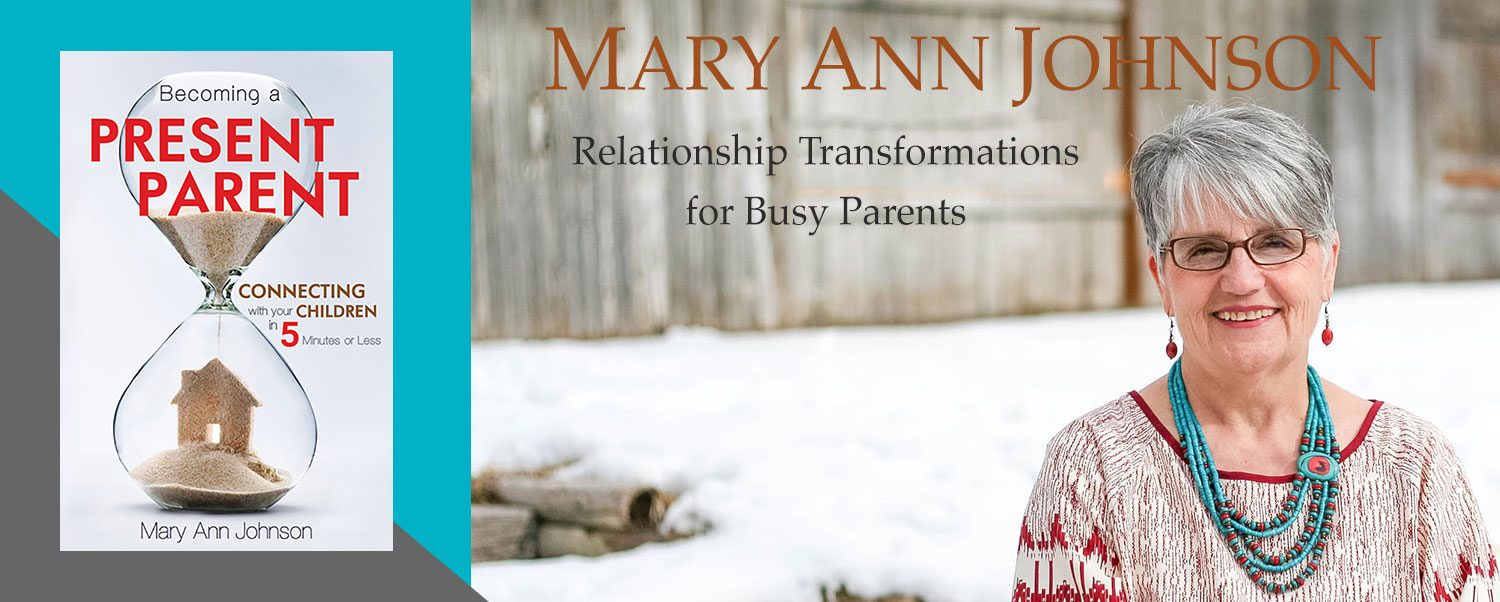

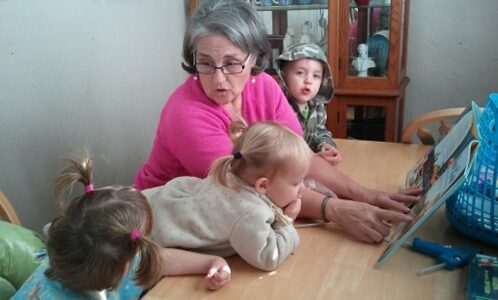
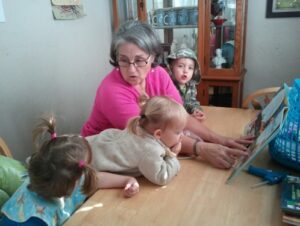 One day in 2011, I found the most amazing book at the library!!! I happened across it accidentally. It was about Leonardo Da Vinci and the amazing visions he had. But that wasn’t all. The book showed how, in time, all his inventive ideas were created by other people and who those people were. Oh my gosh, I wanted to share this with my grands.
One day in 2011, I found the most amazing book at the library!!! I happened across it accidentally. It was about Leonardo Da Vinci and the amazing visions he had. But that wasn’t all. The book showed how, in time, all his inventive ideas were created by other people and who those people were. Oh my gosh, I wanted to share this with my grands.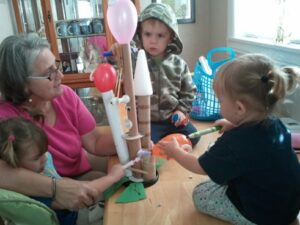 Our Super-duper Rocket-propelled Robot
Our Super-duper Rocket-propelled Robot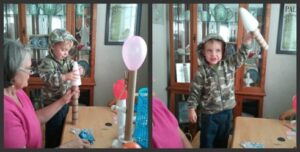

 I have the opportunity to talk with women of different ages about many things. It’s one of the perks of my life. This summer, I am sharing ‘A Series of Conversations’ – Articles that have come out of conversations with friends. I’m sure they will be what someone needs to hear, as they have been for me.
I have the opportunity to talk with women of different ages about many things. It’s one of the perks of my life. This summer, I am sharing ‘A Series of Conversations’ – Articles that have come out of conversations with friends. I’m sure they will be what someone needs to hear, as they have been for me.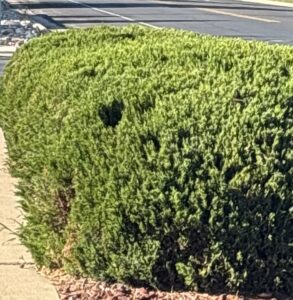 was a bright blue patch, surrounded by clouds, in the shape of a heart. I couldn’t pull over to take a photo, but I had seen it. It had been one of those busy, chaotic mornings, and seeing the heart helped me breathe and smile.
was a bright blue patch, surrounded by clouds, in the shape of a heart. I couldn’t pull over to take a photo, but I had seen it. It had been one of those busy, chaotic mornings, and seeing the heart helped me breathe and smile.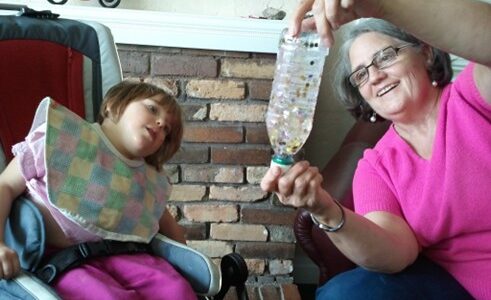
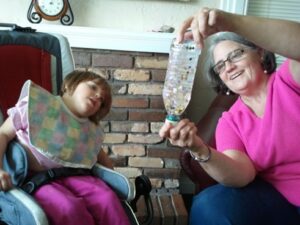 Summer is the perfect time to learn about stars because after you do a few fun activities, you can lie under the stars as a family, breathe the air, and stare into the night sky. What a relaxing thing to do. As I said a few weeks ago, this summer I am sharing some old grandma school times I had with my grands back in 2011. Bigger kids like helping younger ones, so even though these are simple things, you can do them as a family and get the older kids involved. Just don’t pick a Friday or Saturday night. : )
Summer is the perfect time to learn about stars because after you do a few fun activities, you can lie under the stars as a family, breathe the air, and stare into the night sky. What a relaxing thing to do. As I said a few weeks ago, this summer I am sharing some old grandma school times I had with my grands back in 2011. Bigger kids like helping younger ones, so even though these are simple things, you can do them as a family and get the older kids involved. Just don’t pick a Friday or Saturday night. : )
 Two weeks ago, in the article
Two weeks ago, in the article For example, when my 3-year-old grandson was being a pill, his mom would stop, get down to his level, and say, “What’s wrong, little son?” When I watched her, I knew she was ticked off, but
For example, when my 3-year-old grandson was being a pill, his mom would stop, get down to his level, and say, “What’s wrong, little son?” When I watched her, I knew she was ticked off, but 

 white face paint and lipstick. The white face paint was Halloween makeup I bought many years ago. It worked well enough. For red, we used what grandma had, lipstick. As I say, keep it simple. Then we tried on all the glasses, boas, ties, and other costume items. Jack fell in love with a hat and a bow tie. He asked me if he could have them. I said he could surely borrow them. “I don’t like borrow” he said, “I want to have them!” LOL
white face paint and lipstick. The white face paint was Halloween makeup I bought many years ago. It worked well enough. For red, we used what grandma had, lipstick. As I say, keep it simple. Then we tried on all the glasses, boas, ties, and other costume items. Jack fell in love with a hat and a bow tie. He asked me if he could have them. I said he could surely borrow them. “I don’t like borrow” he said, “I want to have them!” LOL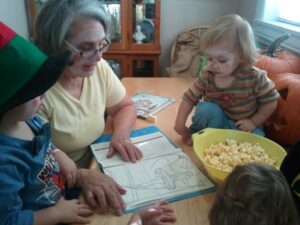 sometimes we aren’t! We managed with what we had, and I made a circus book. I found a terrific site of circus pictures, printed them off, and put them into a binder. (Jack, Mary, and Maggie used it until it fell apart.) It also made a great circus coloring book.
sometimes we aren’t! We managed with what we had, and I made a circus book. I found a terrific site of circus pictures, printed them off, and put them into a binder. (Jack, Mary, and Maggie used it until it fell apart.) It also made a great circus coloring book.
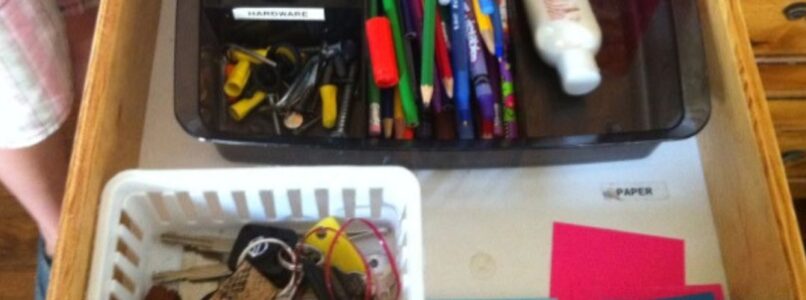
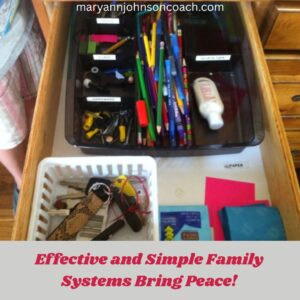 This week, as I walked with my friends Livia and Alysia, the conversation turned to their teens and the issues surrounding accomplishing things at home. At one point, Livia mentioned the need for successful systems. I told them how interesting the conversation was because I was working on my article for today, and it was about creating
This week, as I walked with my friends Livia and Alysia, the conversation turned to their teens and the issues surrounding accomplishing things at home. At one point, Livia mentioned the need for successful systems. I told them how interesting the conversation was because I was working on my article for today, and it was about creating 
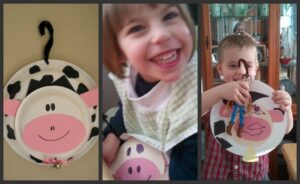 When I first began writing and publishing articles, it was in 2010. My grands, the ones I still live with, were all under five. As their grandma, I wanted to find ways to play and connect. I’m not a board game person! Tea parties and dress up are not on my list of fun things! The truth is, I like learning. I always have. I thought a lot about how I could ‘play’ with my grands and make it work for all of us. What I came up with was learning for fun. Every Tuesday, for several years, we would gather and play/learn. They looked forward to it and occasionally would tell me what they wanted to know or ask about at our next Tuesday session. It was a hit and was called Grandma School. : )
When I first began writing and publishing articles, it was in 2010. My grands, the ones I still live with, were all under five. As their grandma, I wanted to find ways to play and connect. I’m not a board game person! Tea parties and dress up are not on my list of fun things! The truth is, I like learning. I always have. I thought a lot about how I could ‘play’ with my grands and make it work for all of us. What I came up with was learning for fun. Every Tuesday, for several years, we would gather and play/learn. They looked forward to it and occasionally would tell me what they wanted to know or ask about at our next Tuesday session. It was a hit and was called Grandma School. : ) the pictures and I told them fun cow facts, such as, “Did you know a cow has four stomachs. You only have one, but a cow has four!!” That type of comment is usually followed by a question such as “Why Grandma?” Then we get to learn a bit more. Jack’s favorite cow fact was: “Daddy cows are called bulls and they go Moo really, really loud.” I did such a great daddy cow impersonation that it sent Jack into gales of laughter.
the pictures and I told them fun cow facts, such as, “Did you know a cow has four stomachs. You only have one, but a cow has four!!” That type of comment is usually followed by a question such as “Why Grandma?” Then we get to learn a bit more. Jack’s favorite cow fact was: “Daddy cows are called bulls and they go Moo really, really loud.” I did such a great daddy cow impersonation that it sent Jack into gales of laughter.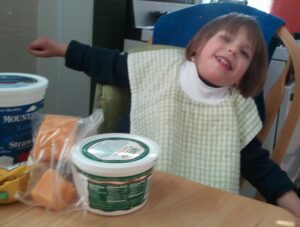 After the books, we did a cow activity. I had created a picture sheet on my computer that showed cool foods that are made from cow’s milk: cheese, cream, ice cream, milk for cereal, cottage cheese, sour cream, etc. I also had the real item on the table, if we had it. We looked at the pictures, talked about each item, and then tasted it. Of course, we all liked the cookie dough best. (It has milk in it!)
After the books, we did a cow activity. I had created a picture sheet on my computer that showed cool foods that are made from cow’s milk: cheese, cream, ice cream, milk for cereal, cottage cheese, sour cream, etc. I also had the real item on the table, if we had it. We looked at the pictures, talked about each item, and then tasted it. Of course, we all liked the cookie dough best. (It has milk in it!)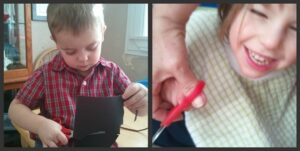 way, but then switched to using two hands and having me hold and turn the paper. Special scissors with 4 finger holes allowed me to help Maggie cut her own cow spots. She was thrilled. (Remember, Maggie, who is now eighteen, has severe cerebral palsy, so doing anything with help thrilled her and still does.)
way, but then switched to using two hands and having me hold and turn the paper. Special scissors with 4 finger holes allowed me to help Maggie cut her own cow spots. She was thrilled. (Remember, Maggie, who is now eighteen, has severe cerebral palsy, so doing anything with help thrilled her and still does.)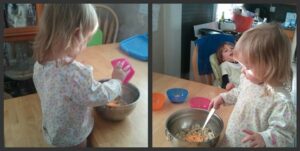 We ended the day by making mac and cheese. Cooking was a favorite activity, so everyone helped. The kids liked tasting the powdered cheese. We had our mac and cheese for lunch, and it was delicious. Maggie, Jack, and Mary decided that having cows in our world is a very good thing.
We ended the day by making mac and cheese. Cooking was a favorite activity, so everyone helped. The kids liked tasting the powdered cheese. We had our mac and cheese for lunch, and it was delicious. Maggie, Jack, and Mary decided that having cows in our world is a very good thing.
 This week, I began cleaning the top shelves that encircle my living room and the two bedrooms. It’s a big job, requires a ladder, and the accumulated dust is incredible. I only do this once a year.
This week, I began cleaning the top shelves that encircle my living room and the two bedrooms. It’s a big job, requires a ladder, and the accumulated dust is incredible. I only do this once a year.
 One evening, my husband Don was watching Sci-Fi on TV. I was cooking and could hear it. A man said to a woman, “To heal your wounds, you must see the past clearly.”
One evening, my husband Don was watching Sci-Fi on TV. I was cooking and could hear it. A man said to a woman, “To heal your wounds, you must see the past clearly.”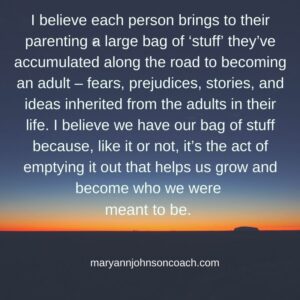 where I live in our four-generation home, for over a year. It’s been nice to have his presence and help. We have all benefited, including Seth. His reason for coming here, from Montana, which he loves, was to take a series of classes to help him do some healing work. You see, no one’s past is trauma-free. It is the bag thing. : )
where I live in our four-generation home, for over a year. It’s been nice to have his presence and help. We have all benefited, including Seth. His reason for coming here, from Montana, which he loves, was to take a series of classes to help him do some healing work. You see, no one’s past is trauma-free. It is the bag thing. : )